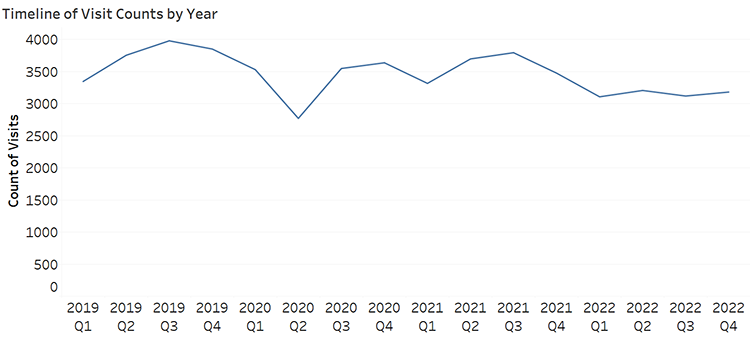Fast Facts: April is Parkinson's Awareness Month
April is known as Parkinson’s Awareness Month to increase education about the brain disorder. The National Institutes of Health states that Parkinson’s disease (PD) is a brain disorder that impacts one’s coordination, balance, shaking and stiffness. Parkinson’s Foundation writes, “Nearly one million people in the U.S. are living with Parkinson's disease (PD). This number is expected to rise to 1.2 million by 2030.” The number of people in the U.S. diagnosed with PD each year is roughly 90,000. Parkinson’s disease is the second most common neurologic condition found in the United States after Alzheimer’s. The Parkinson’s Foundation also states that worldwide, it is estimated that almost 10 million people are living with Parkinson’s.

The WHA Information Center analyzed hospital claims from 2019 to 2022. There is a decrease in the number of visits over time. COVID-19 had a strong impact on visits seen in the second quarter of 2020. Men have a much higher visit count than women do—similar to what national trends see of men being affected by PD more than women. Inpatient services saw the most visits by those with Parkinson’s, but it was followed closely by the emergency department.
Below are some risk factors of Parkinson’s Disease written by the National Institute of Neurological Disorders and Stroke:
- Age—The average age of onset is about 70 years, and the incidence rises significantly with older age. However, a small percentage of people with PD have “early-onset” disease that begins before the age of 50.
- Biological sex—PD affects more men than women.
- Heredity—People with one or more close relatives who have PD have an increased risk of developing the disease themselves. An estimated 15 - 25% of people with PD have a known relative with the disease. Some cases of the disease can be traced to specific genetic mutations.
- Exposure to pesticides—Studies show an increased risk of PD in people who live in rural areas with increased pesticide use.